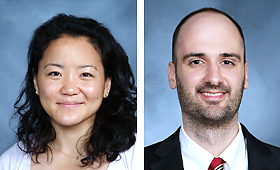Medications Can Help Patients With Substance Use, Psychotic Disorders
Abstract
Ideally treatments for patients with comorbid psychotic and substance abuse disorders include psychosocial, psychotherapeutic, and psychopharmacological interventions.

Bernadine H. Han, M.D., M.S., Jonathan Avery, M.D.
Substance use disorders are common among patients with schizophrenia. Psychiatrists may feel overwhelmed by such complicated patients, but there are a number of evidence-backed treatment options for them.
When possible, the general goal is to treat both the psychotic symptoms and the substance use disorders simultaneously. Ideally, treatment will encompass psychosocial, psychotherapeutic, and psychopharmacological interventions. In this article, we focus on the medication options for patients with psychotic symptoms and substance abuse disorders.
Second-generation antipsychotics: There is fair evidence that second-generation antipsychotics for patients with co-occurring psychotic and substance use disorders increase abstinence and decrease cravings of nicotine, alcohol, cannabis, and cocaine (5). Clozapine is especially effective at decreasing use of substances by up to 70 percent to 80 percent, and these effects appear to be sustained long term (5, 6, 7). However, studies suggest that first-generation antipsychotics do not have the same effect, and they may even worsen substance use (5, 6).
Bupropion, varenicline, and nicotine replacement treatments: Among patients with schizophrenia, tobacco is the most common substance of abuse. Bupropion, varenicline, and nicotine replacement treatments may help with tobacco use disorders. As a dopamine agonist, bupropion theoretically can increase the risk of psychosis, but a recent systematic review showed minimal risk when weighed against the number of patients who benefited from it (4).
It is important to keep in mind that byproducts of tobacco smoking induce CYP1A2 and thus may decrease levels of antipsychotics such as clozapine, olanzapine, and haloperidol (7). Smokers tend to be on increased doses of these medications compared with nonsmokers, and this can be clinically important with patients who are trying to quit or even those who are transitioning back to the community (and their cigarettes) after an extended inpatient admission.
Disulfiram, acamprosate, topiramate, and naltrexone: Disulfiram, acamprosate, topiramate, and naltrexone are effective medications in alcohol use disorders, and although there are few data in dually diagnosed populations, they are commonly and effectively prescribed (7).
There is compelling evidence that chronically psychotic patients do worse when using cocaine, cannabis, and other substances, but the research on effective treatments when comorbid with psychotic disorders is lacking. Just as with tobacco and alcohol use disorders, simultaneous treatment for both psychosis and substance use is recommended.
Concurrent substance use dramatically worsens medical, functional, and symptomatic outcomes in patients with chronic psychotic disorders. Future work must be done to study and research further interventions for these challenging individuals. ■
References
1. Adinoff B. Neurobiologic Processes in Drug Reward and Addiction. Harvard Review of Psychiatry. 2004; 12(6):305-320.
2. Avery J, Zerbo E, Ross S. Improving Psychiatrists’ Attitudes Towards Individuals With Psychotic Disorders and Co-Occurring Substance Use Disorders. Academic Psychiatry. 15 May 2015.
3. de Melo RC, Lopes R, Alves C. A Case of Psychosis in Disulfiram Treatment for Alcoholism. Case Reports in Psychiatry. 2014;1-4.
4. Englisch S, Morgen K, Meyer-Lindenberg A, Zink M. Risks and Benefits of Bupropion Treatment in Schizophrenia: a Systematic Review of the Current Literature. Clinical Neuropharmacology. 2013;36(6):203-15.
5. Green AI, Drake RE, Brunette MF, Noordsy DL. Schizophrenia and Co-Occurring Substance Use Disorder. American Journal of Psychiatry. 2007;164(3):402-408.
6. Murthy P, Chand P. Treatment of Dual Diagnosis Disorders. Current Opinion in Psychiatry. 2012;25(3):194-200.
7. Ziedonis DM, Fan X, Bizamcer AN, et al. Co-Occurring Addiction and Psychotic Disorders. In Ries RK, Fiellin DA, Miller SC, Saitz R, eds. The ASAM Principles of Addiction Medicine, 5th ed. Philadelphia, PA: Lippincott Williams & Wilkins; 2014:1346-1364.



